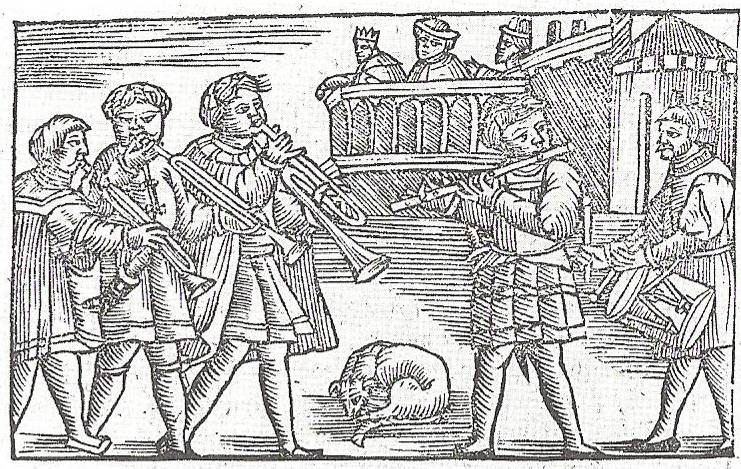 |
| Le Rallye-Cor de Montmélian |
Title: Greyner, zanner
Composer: Heinrich Finck
Ensemble: Piffaro
Album: Stadpfeiffer:Music of Renaissance Germany
Note: This particular ensemble is a mixed group of period instruments, including shawms, dulcians, sackbuts, recorders, krumhorns, bagpipes, lutes, guitars, harps, and a variety of percussion. Although it is not exclusively a brass ensemble, this track is a good example of the Stadtpfeifer tradition of civic musicians employed in Renaissance Germany who, among other ceremonial duties, would perform from towers, playing fanfares and serving as "human fire alert systems." For more information, see the post called Stadtpfeifer, Alto Capella and Waits.
Title: Canzon per sonar in echo duodecimi toni a 10
Composer: Giovanni Gabrieli
Ensemble: National Brass Ensemble
Title: Canzon a 5
Composer: Claudio Merula
Ensemble: English Cornett and Sackbut Ensemble
Album: Accendo - Music from the Time of Claudio Monteverdi
Title: La Bignani
Composer: Giovanni Cavaccio
Ensemble: English Cornett and Sackbut Ensemble
Album: Accendo - Music from the Time of Claudio Monteverdi
Title: Intrada and Courant from "Battle Suite"
Composer: Samuel Scheidt
Ensemble: American Brass Quintet
Album: ABQ Plays Renaissance/Elizabethan
Title: Dovehouse Pavan
Composer: Ferrabosco
Ensemble: American Brass Quintet
Album: ABQ Plays Renaissance/Elizabethan
Title: Les Plasirs de la Chasse
Composer: (traditional)
Ensemble: Le Rallye de Montmelian
Album: Cor de Chasse
Title: Ellen Bayne Quickstep
Composer: G. W. E. Freiderich
Ensemble: Empire Brass and Friends
Album: American Brass Band Journal
Title: Canzona Bergamasca
Composer: Scheidt
Ensemble: Eastman Brass Quintet
Album: Renaissance Brass Music
Title: Brass Quintet No. 1
Composer: Jean Francois Bellon
Ensemble: Ewald Brass Quintet
Album: Four Brass Quintets

